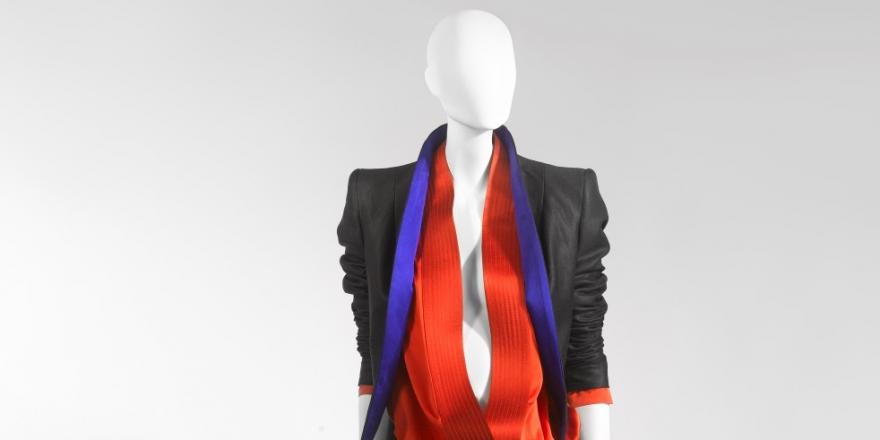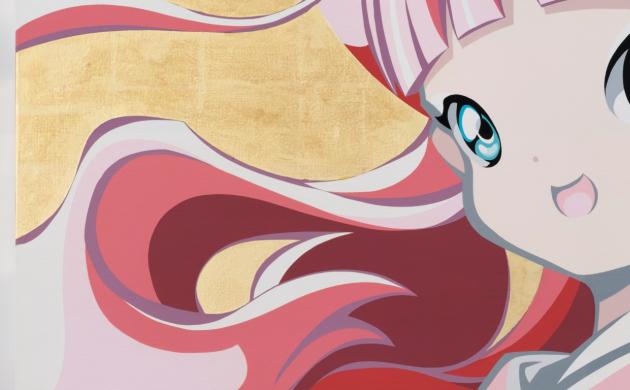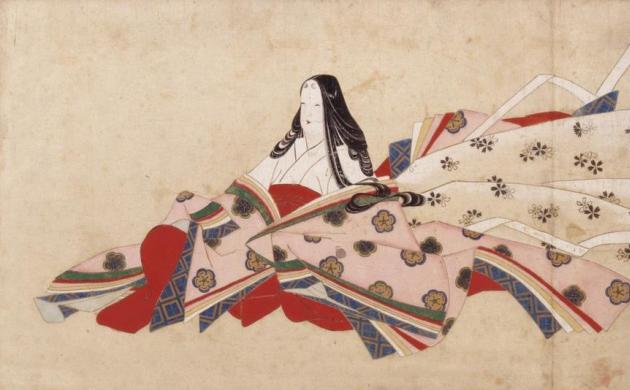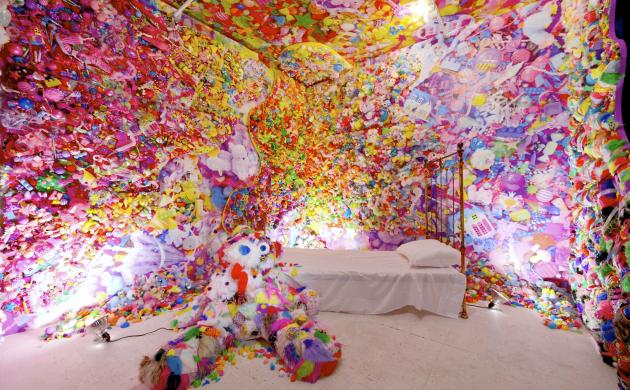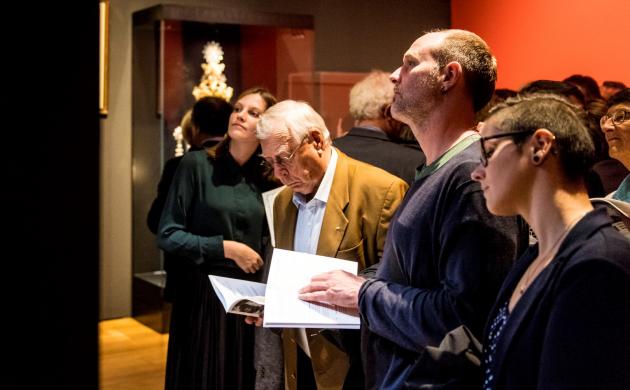Japanese avant-garde
Thanks to a number of unique loans from the Fashion Museum, visitors could get acquainted with Japanese avant-garde fashion that revolutionised Parisian catwalks in the 1980s. Garments from Yohji Yamamoto and Issey Miyake and Rei Kawakubo, founder of the brand Comme des Garçons are often asymmetrical with unfinished details.
Traditional Japanese form elements can also be found in Haider Ackermann's work. The designer studied fashion design at the Antwerp fashion academy. He incorporated Japanese elements such as folding techniques reminiscent of a traditional kimono, or pleats that appear to reference the Japanese origami folding technique. Just like the Japanese avant-garde artists, Antwerp designer Ann Demeulemeester draws inspiration from the imperfect, and is reflected in the asymmetry of her designs. Ann Demeulemeester also shares the use of sober colours with Japanese designers, as well as the choice of large fits, which often skirt the border between men's and women's clothing.
Kawaii
Something entirely different than the Japanese avant-garde is the colourful cute fashion that emerged in the Harayuku district of Tokyo in the 1980s as part of the Kawaii subculture, literally meaning cute or sweet. An outfit from a well-known Harajuka street fashionista, Kurebayashi Haruka, showed well how this fashion carefully assembles different colourful elements with insight and taste. You could also get hands-on in one of the workshops.


